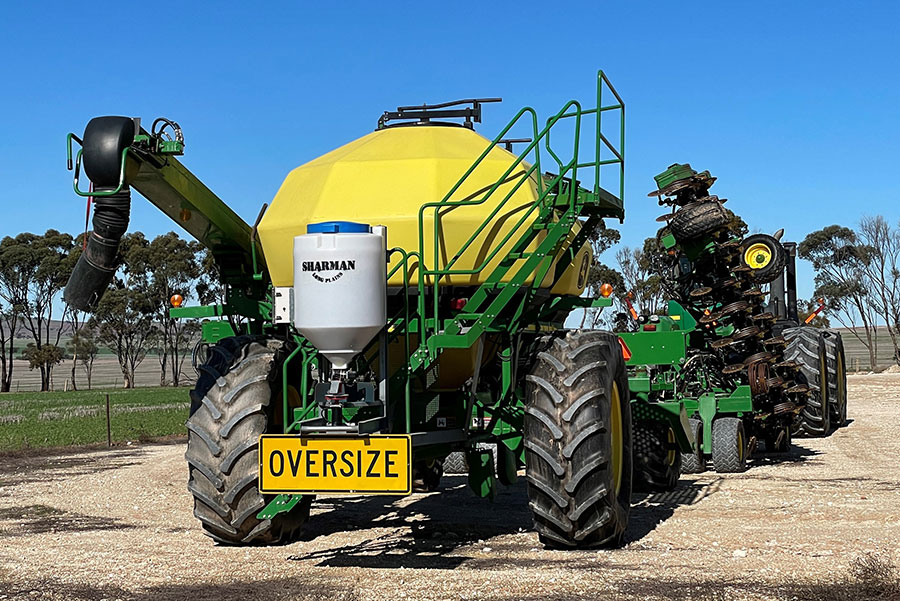Western Australian grain growers are encouraged to be vigilant in monitoring mouse numbers in the lead up to seeding as growing regions across the state face continued pressure from the pests.
With a record 2022 harvest including a 26 million tonne grain crop in WA, an abundance of food available in paddocks may contribute to further mouse pressures in 2023.
CSIRO rodent expert Steve Henry, who is one of the lead researchers on the Grains Research and Development Corporation (GRDC)-supported investment into mouse management, says that conditions were ripe for mouse breeding this time of year.
Mr Henry encouraged growers to monitor their paddocks throughout autumn, taking steps to reduce sources of available food.
“It is imperative growers get out of their vehicles, walk into their paddocks and get a good feel for what is going on in respect to current mouse numbers and activity,” he says.
“Even if you think your paddocks are clean, remember only 150 kilograms per hectare of alternative food across your paddock equates to 50,000 mouse days of food.
“Be aware of any paddocks that may have incurred hail damage or head loss, especially in barley, as there may be excess grain on the ground, which mice will hunt out.
“If you notice evidence of mouse activity, be prepared to bait at seeding time.”
GRDC and Australia’s national science agency CSIRO, recommend the application of zinc phosphide baits, which is the only rodenticide active ingredient registered for use in broadacre cropping in Australia.
Grain growers can access online stewardship training and reporting programs from Grain Producers Australia that have been introduced to support best practice application of ZP50 mouse bait products.
In addition to completing the stewardship training, Mr Henry advised growers to speak with bait manufacturers and resellers early, as bait can be in high demand once mouse plagues break out.
Tips for mouse management heading into seeding include:
- prioritising your paddocks for surveillance by choosing paddocks that have had heavy stubbles or grain loss;
- getting out of the ute and walking your paddocks and doing your surveillance 4-6 weeks before sowing;
- talking to your bait suppliers early if there is evidence of high mouse numbers; and
- ensuring you complete the required training for ZP50 mouse bait application.
GRDC has invested significantly in mouse monitoring and management and is committed to helping growers increase their preparedness for mouse outbreaks and the effectiveness of baiting.
As part of this commitment, GRDC has launched a new investment into mouse bait spreading, which aims to give growers resources and information to improve their bait spreading operations and reduce crop losses.
Project lead and research engineer Ben White says little work had been done in Australia to date looking at mouse bait distribution uniformity and bait integrity using different spreading equipment.

Research engineer Ben White is leading a GRDC investment aiming to give growers resources and information to improve their bait spreading operations. Photo: Ben White.
“We need these mouse baits to be as effective as possible, so getting the spread right and ensuring the mouse receives the required lethal dose is essential,” Mr White says.
“Growers need to know what mouse bait distribution they can get using different machinery, including how precisely the bait is metered, how wide it’s spread, and the distribution uniformity to adhere to the label rate while enhancing efficacy.”
The project includes a consultative review of current spreader options for baiting and a series of national grower case studies detailing individual experiences.
“Farmers are great at learning from other farmers and making adaptations. A big part of this project is the 15 case studies, five from each GRDC region, capturing grower experiences to date,” Mr White says.
“We’ll also be working closely with the team at CSIRO to determine an effective co-efficient of variation for bait spreading. We don’t currently know what that is for mouse bait.”
GRDC crop protection manager – west, Georgia Megirian, says while the project had arisen out of grower feedback in WA at GRDC National Grower Network (NGN) forums, outcomes would benefit grain growers nationwide.
“With significant mouse pressures across WA over the last two seasons, some growers have encountered challenges with their baiting operations, like the scraping of zinc phosphide active off the surface of the grain due to excessive churning or trouble achieving the required bait coverage,” Ms Megirian says.
“In areas where mice haven’t been an issue historically, growers and resellers had limited access to mouse baits, and limited resources and information on optimising bait spread operations during the cropping season.
“This project will provide guidelines for different bait spreading equipment, and allow growers to hear from other growers, firsthand, about what’s working for them, and what isn’t.”
Growers are encouraged to use GRDC’s Mouse Management resources to assist them in the lead up to seeding, including downloadable Mouse Chew Cards for monitoring.
They are also urged to report and map regional mouse activity using the MouseAlert website which assists in identifying mouse population ‘hot spots’ to facilitate timely management actions, and can help the CSIRO mouse research team to build a broader picture of mouse activity for the prediction of future outbreaks.
A step-by-step guide explaining the training and reporting programs from Grain Producers Australia is available online to download: How-to guide: Mouse Bait Stewardship. For more information about ZP50 products and the new programs go to the GPA – Mouse bait stewardship and reporting web page.

























































